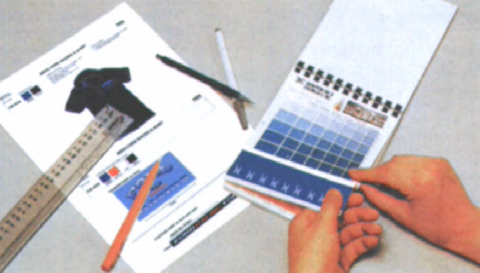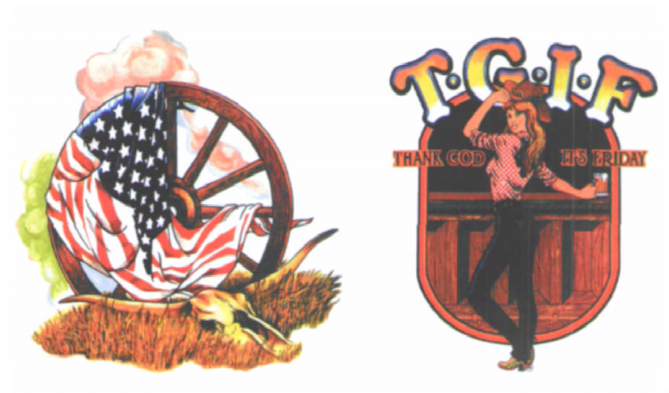T-shirt printing pattern design by the constraints of the screen printing process, the T-shirt pattern design personnel requirements are relatively high. In order to improve the design level of designers, enterprises should also encourage designers to go deep into the production line to practice and understand the relationship between pattern design and production process. In addition, in order to make the designer's work can meet the market innovation requirements, enterprises should also organize design staff often study and exchange and observation.
T-shirt pattern design is a combination of graphic design and apparel design. At present, there are various types of T-shirt design, the more common ones are trademark, text, and comprehensive.
1)Trademark
There are many international brands of T-shirts, the printing pattern is its own trademark, so that not only has an advertising role for the enterprise, and play a decorative role. Excellent trademark design should be simple and easy to understand, clear at a glance.
(2) Text category
T-shirt text type pattern is a very visual communication language, not only has the beauty of the image art, but also conveys the message. Chinese, English, Arabic numerals, etc. after the designer to the concept, idea, intention and the times of integration, through artistic processing, good text class pattern of
T-shirt with practical function, visual beauty, strong artistic influence, in line with the era of aesthetics and other characteristics.
3)Comprehensive category
Comprehensive T-shirts are most likely to attract people's attention and bring visual beauty to meet people's demand for fashion and personalization.

Suitable for T-shirt pattern printing process there are many, can be divided into three categories: screen direct printing, transfer printing, digital printing.
1. Screen direct printing
Glue paste printing - the deployment of a good paste through the screen directly printed on the T-shirt. Suitable for field single color or point, line, block surface multi-color printing, not suitable for network printing.
2. Transfer printing process
Hot stamping transfer-also known as offset transfer or photographic plate transfer. It is the use of lithographic printing and screen printing process combined to produce clear graphics, can be a realistic representation of natural scenery and other types of images, and can achieve photo-like quality effect, and strong washability, and then through the heating and pressure transfer in all kinds of different colors on the T-shirt. Sublimation transfer-also known as "air-dyeing". Under the high temperature of about 200 ℃, the dye type ink with sublimation conditions is directly transformed into a gaseous state without liquefaction, thus forming a pattern on the fabric, which is a fabric printing and dyeing method with practical significance. The transfer paper can be produced by lithographic printing, screen printing, gravure printing, color spray printing and other processes, and then the pattern is transferred to the T-shirt by heating and pressure, which has high color fastness, fine and realistic graphics, strong breathability and brilliant color. But only limited to high temperature resistant part of the synthetic white or light-colored fiber fabrics such as polyester, acrylic, etc., can not be used for cotton fiber fabrics.
3. Digital printing and other
Digital printing - the use of computers and related software to edit the image and input high-tech digital T-shirt printing equipment for printing. With colorful, clear pattern, no pollution, no starting amount of printing, but can not print special materials, such as foam, gold and silver glitter, reflective, rubber beads, thick version, draw dye, etc..
The above T-shirt printing process is only a few of the more common, in practice The actual operation can summarize many kinds of new varieties and new patterns.





